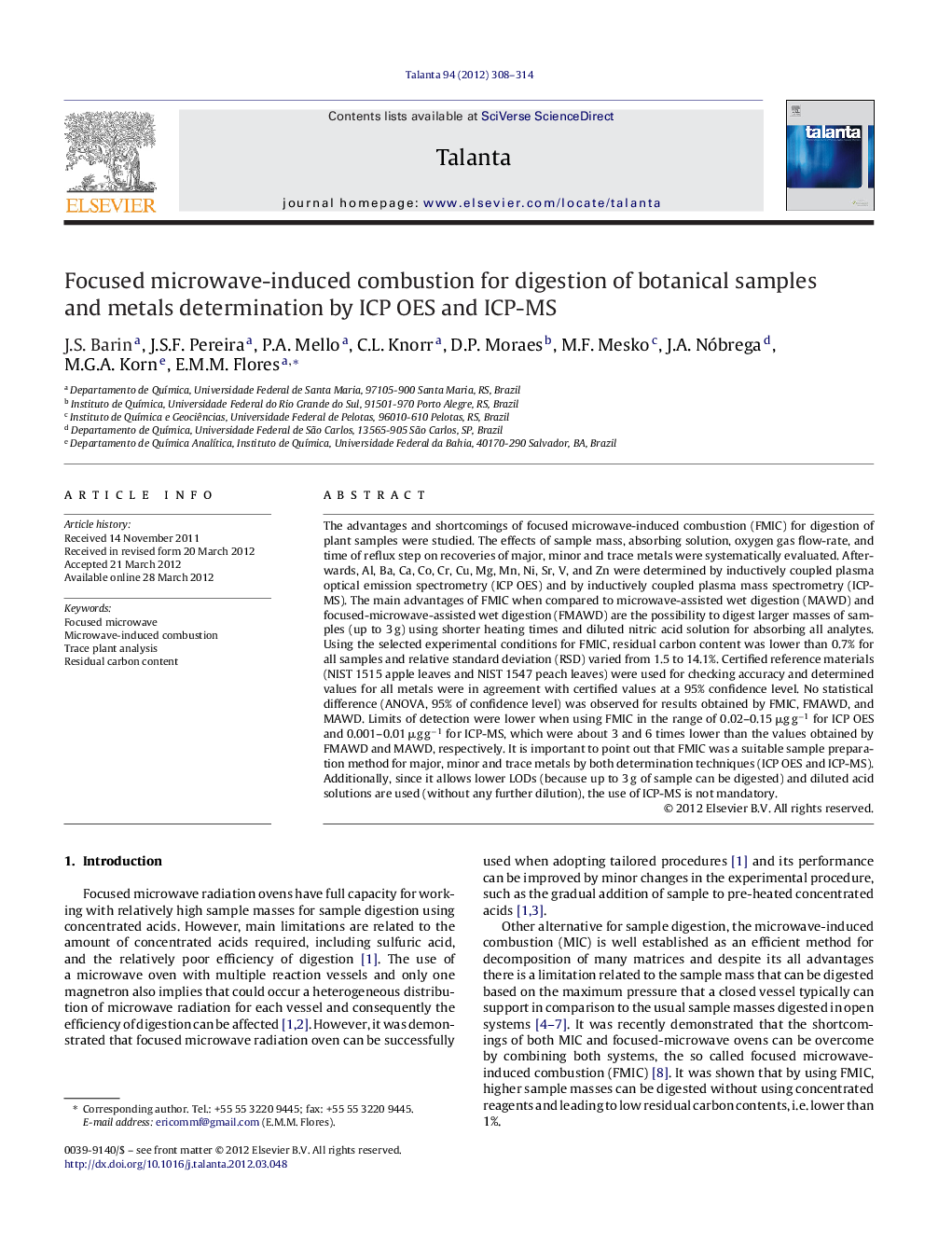| کد مقاله | کد نشریه | سال انتشار | مقاله انگلیسی | نسخه تمام متن |
|---|---|---|---|---|
| 1245653 | 1495841 | 2012 | 7 صفحه PDF | دانلود رایگان |

The advantages and shortcomings of focused microwave-induced combustion (FMIC) for digestion of plant samples were studied. The effects of sample mass, absorbing solution, oxygen gas flow-rate, and time of reflux step on recoveries of major, minor and trace metals were systematically evaluated. Afterwards, Al, Ba, Ca, Co, Cr, Cu, Mg, Mn, Ni, Sr, V, and Zn were determined by inductively coupled plasma optical emission spectrometry (ICP OES) and by inductively coupled plasma mass spectrometry (ICP-MS). The main advantages of FMIC when compared to microwave-assisted wet digestion (MAWD) and focused-microwave-assisted wet digestion (FMAWD) are the possibility to digest larger masses of samples (up to 3 g) using shorter heating times and diluted nitric acid solution for absorbing all analytes. Using the selected experimental conditions for FMIC, residual carbon content was lower than 0.7% for all samples and relative standard deviation (RSD) varied from 1.5 to 14.1%. Certified reference materials (NIST 1515 apple leaves and NIST 1547 peach leaves) were used for checking accuracy and determined values for all metals were in agreement with certified values at a 95% confidence level. No statistical difference (ANOVA, 95% of confidence level) was observed for results obtained by FMIC, FMAWD, and MAWD. Limits of detection were lower when using FMIC in the range of 0.02–0.15 μg g−1 for ICP OES and 0.001–0.01 μg g−1 for ICP-MS, which were about 3 and 6 times lower than the values obtained by FMAWD and MAWD, respectively. It is important to point out that FMIC was a suitable sample preparation method for major, minor and trace metals by both determination techniques (ICP OES and ICP-MS). Additionally, since it allows lower LODs (because up to 3 g of sample can be digested) and diluted acid solutions are used (without any further dilution), the use of ICP-MS is not mandatory.
► A high sample mass, up to 3 g was completely digested improving the limits of detection (LOD) in relation to the microwave-assisted wet digestion.
► Using only diluted nitric acid, 4 mol l−1 was possible to minimize the use of concentrated acids and residues generation following the recommendations of green chemistry.
► No special or dedicated equipments are necessary once it is possible to use the same commercial equipment of focused microwave oven used for conventional microwave-assisted wet digestion.
Journal: Talanta - Volume 94, 30 May 2012, Pages 308–314